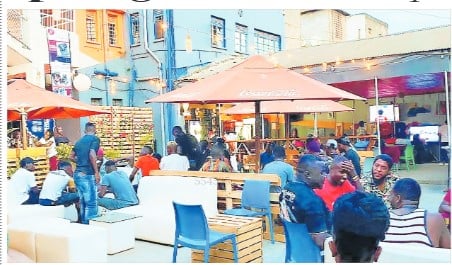Prime
Pay TV subscription fees rising

Pay TV services have been impacted by an expensive licencing regime, poor economic performance and costly television channels. PHOTO ERONIE KAMUKAMA
What you need to know:
- High licencing fees. UCC recently increased pay TV annual licence from Shs22m to 94.5m. The increment, pay TV service providers say, is very high and has impacted on subscribers’ pricing.
- Poor economic performance. Pay TV service providers say slowed economic performance has impacted their operations thus rising the cost of doing business.
- Costly television channels. Pay TV service providers say they are paying so much to bring some channels to their various audiences. This has in effect impacted the price of subscription.
Kampala. Pay television packages are now more expensive than they were a year ago. If you are a StarTimes subscriber, you will notice an announcement running alongside television programmes, particularly indicating that you will have to pay between Shs1,000 and Shs2,000 more on your packages now.
In its justification, StarTimes blamed the performance of the economy over the last one year.
“Almost everything has been affected by the [depreciation] of the shilling and the poor performance of the economy. Almost everything had changed in terms of prices and we had not done anything so it is in this time that it became inevitable to adjust upwards,” Mr Aldrine Nsubuga, the StarTimes vice president, said.
GOtv Plus subscribers have to now pay Shs2,000 more and Shs1,500 more for GOtv Lite.
Subscribers who pay quarterly now have to pay Shs2,000 more or Shs10,000 more for those using an annual package.
MultiChoice public relations manager Tina Wamala, said rising operational costs and the growing fees they have to pay to carry television channels are responsible for the changes.
Kwese Television country manager, Mr Herbert Mucunguzi noted that the sector is facing fundamental challenges that are forcing players to hike prices on packages.
“The licence is too expensive by the way and we have been engaging Uganda Communications Commission (UCC). We want the licencing regime to be harmonised and reduced. Government should regulate us in a way that enables us to increase penetration,” he said.
In June this year, following conclusions of discussions with pay TV service providers, UCC put in place an annual fee of Shs95.4m ($25,000) up from Shs22m.
Although pay TV operators are passing on costs to subscribers, they are doing it cautiously not to hurt their businesses.
“Many customers subscribe to the least priced packages which carry local channels. If you are to increase prices, you will lose customers but you also cannot air local channels at low costs because it does not make business sense since UCC levies a lot of money for licences,” one player said.
The country’s demographics are also forcing pay TV operators to rethink some prices.
For instance, Kwese TV recently slashed a package by Shs40,000 to respond to market needs.
Mr Mucunguzi said they are cognizant of the fact that Uganda has many youth and research shows most of them cannot afford to pay so much for a television package.
For Zuku television, fees on one of the packages grew by Shs1,500 in April. There have not been any more price changes but there is an ongoing debate on whether to effect more changes. These may come towards the end of the year.
While assessing pay TV viewership, a 2018 half year report by Ipsos on Media Consumption and Usage Habits in Uganda indicated consumption of television programmes has grown over the last four years from 27 per cent to 34 per cent.
The report explained that pay TV has made television more lively and competitive. This is besides a variety of content that brings both local and international content to people’s living rooms.
The report shows 56 per cent of Ugandans own a television set top box. Of these, 58 per cent said they use StarTimes set top boxes and 20 per cent, 9 per cent and 8 per cent use GOtv, Zuku Tv and Azam Tv respectively.
About 79 per cent of set top owners consider affordability while 40 per cent consider local channels before deciding how much to pay as monthly subscription.




